A Source is a device which converts mechanical, chemical, thermal or some other form of energy into electrical energy. In other words, the source is an active network element meant for generating electrical energy.
The various types of sources available in the electrical network are voltage source and current sources. A voltage source has a forcing function of emf whereas the current source has a forcing function of current.
Contents:
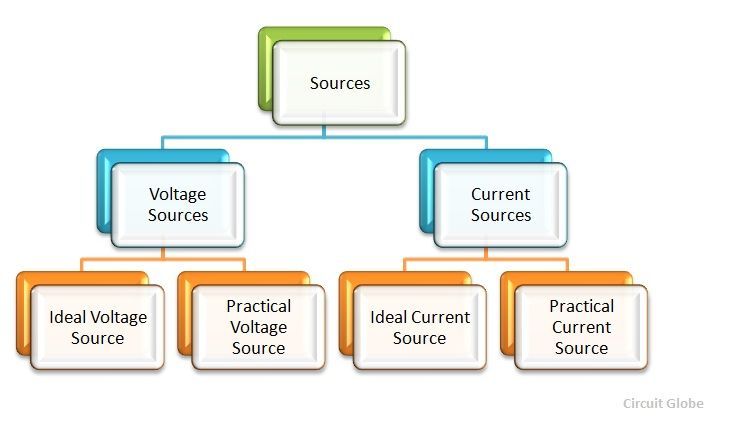
The current and voltage sources are further categorised as an ideal source or practical source.
Voltage Source
A voltage source is a two-terminal device whose voltage at any instant of time is constant and is independent of the current drawn from it. Such a voltage source is called an Ideal Voltage Source and have zero internal resistance.
Practically an ideal voltage source cannot be obtained.
Sources having some amount of internal resistances are known as Practical Voltage Source. Due to this internal resistance; voltage drop takes place, and it causes the terminal voltage to reduce. The smaller is the internal resistance (r) of a voltage source, the more closer it is to an Ideal Source.
The symbolic representation of the ideal and practical voltage source is shown below.
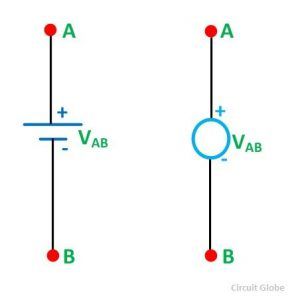 Figure A shown below shows the circuit diagram and characteristics of an ideal voltage source:
Figure A shown below shows the circuit diagram and characteristics of an ideal voltage source:
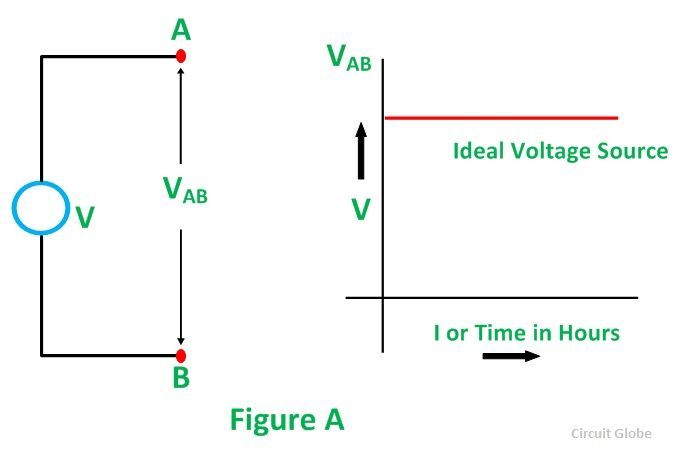 Figure B shown below gives the circuit diagram and characteristics of Practical Voltage Source:
Figure B shown below gives the circuit diagram and characteristics of Practical Voltage Source:
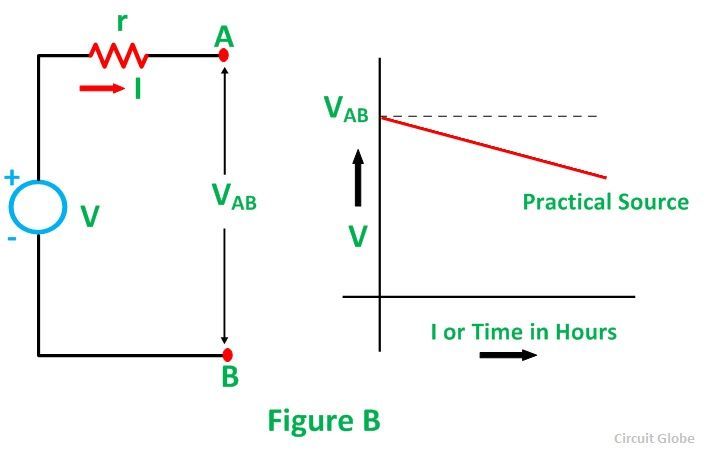 The example of voltage sources is batteries and alternators.
The example of voltage sources is batteries and alternators.
Current Source
The current sources are further categorised as Ideal and Practical current source.
An ideal current source is a two-terminal circuit element which supplies the same current to any load resistance connected across its terminals. It is important to keep in mind that the current supplied by the current source is independent of the voltage of source terminals. It has infinite resistance.
A practical current source is represented as an ideal current source connected with the resistance in parallel. The symbolic representation is shown below:
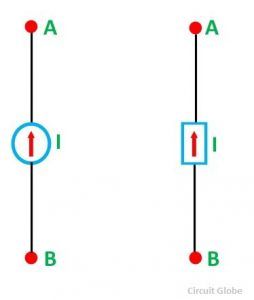 Figure C shown below, show its characteristics.
Figure C shown below, show its characteristics. 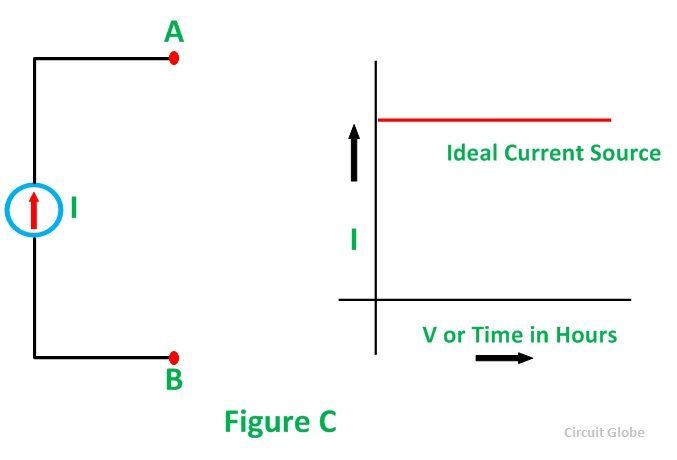 Figure D shown below shows the characteristics of Practical Current Source.
Figure D shown below shows the characteristics of Practical Current Source.
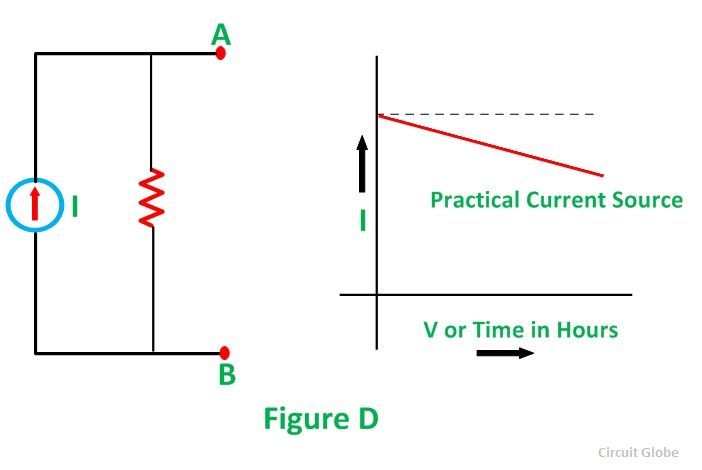 The example of current sources is photoelectric cells, collector currents of transistors.
The example of current sources is photoelectric cells, collector currents of transistors.

Hello sir , I like your article on practical voltage/Current source for best explained . so i would like to know in transanforless 230V ac to 12V dc circuit construction before bridge rectifier on main line point A and B.
On point A before R-C Series resistor And also Point B Main line before bridge rectifier also series resistor placed , what is the exact applications and what impact on circuit construction.
Enclosed web site address to understand what i said,
waiting u r feedback
What will be the voltage across the current source?
Great article … I appreciate it
Very nice.👌this is a very helpful article.
Helpful
nice &helpful
it was very easy to understand. very helpful thank you sir
Under which Condition a practical voltage source consider as good voltage source?